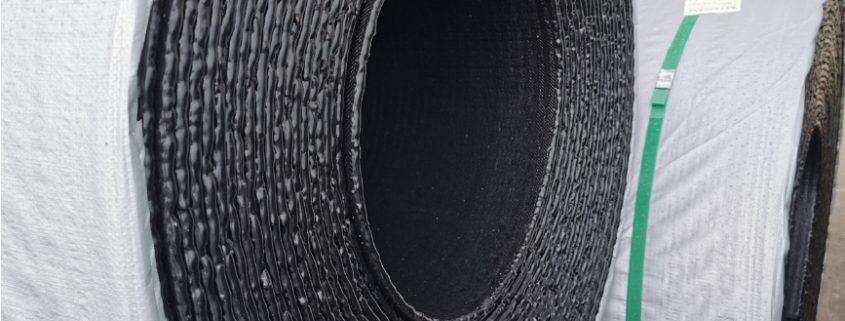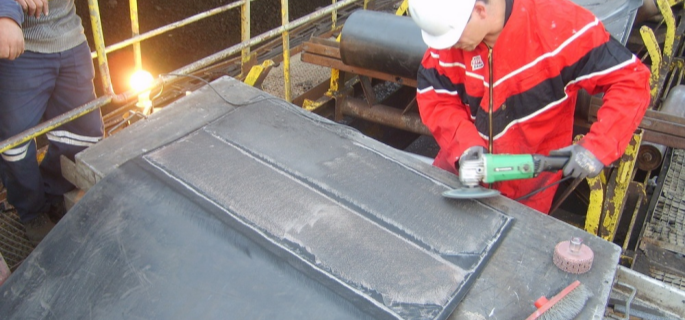In the realm of material handling and industrial operations, the safety and efficiency of conveyor systems are paramount. At the heart of these systems’ safety measures are conveyor return roller guards, critical components designed to protect workers and ensure smooth operation. These guards serve as a shield, preventing accidental contact with moving parts that could lead to injuries or disruptions in the workflow. By effectively covering the return rollers, these guards not only minimize the risk of accidents but also contribute to the longevity and reliability of the conveyor system itself. Their role in maintaining a safe working environment and enhancing operational efficiency cannot be overstated, making them an indispensable part of modern conveyor systems.
Read moreConveyor belts play a pivotal role in a myriad of industries, from manufacturing and logistics to mining and agriculture, streamlining operations and enhancing efficiency. These belts are the lifelines of production lines, moving goods and materials seamlessly through various stages of processing and delivery. Recognizing their critical importance, this guide aims to demystify the process of how to install conveyor belt, drawing upon a wealth of expert advice and a variety of authoritative sources. Whether you’re setting up a new conveyor system or replacing an old belt, our comprehensive guide will walk you through every step of the installation process, ensuring your conveyor belt is set up for optimal performance and longevity. By following these expert insights, you’ll be equipped to tackle the task of installing a conveyor belt with confidence, enhancing your operation’s productivity and efficiency.
Read moreWithin the intricate systems of modern industries, conveyor rollers play a crucial role, significantly impacting overall productivity. Their importance is largely due to their ability to minimize friction, bear comprehensive loads, and ensure the seamless operation of conveyor belts. Deciding on the ideal conveyor roller isn’t a mere stroke of luck but a strategic process where the conveyor roller size chart serves as a comprehensive reference tool. This chart successfully guides the selection process towards choosing the right roller size, diameter, and material that fits specific conveyor system needs. By providing clear, standardized metrics, a conveyor roller size chart ensures the design compatibility between the conveyor belt and rollers, a critical aspect of achieving long-term operational efficiency. In essence, understanding and applying the information conveyed through a conveyor roller size chart is crucial to the engineering and maintenance of conveyor systems.
Read moreIn the realm of material handling and automated manufacturing, PVC conveyor rollers have emerged as essential components, underpinning the efficiency and productivity of countless operations across industries. These rollers, made from durable polyvinyl chloride, offer a lightweight, corrosion-resistant, and cost-effective solution for moving goods of various sizes and weights along the conveyor lines. The growing importance of PVC conveyor rollers can be attributed to their ability to provide a seamless and smooth transportation flow in production environments, minimizing downtime and enhancing operational workflow. They are indispensable in sectors ranging from food processing and pharmaceuticals to warehousing and distribution, showcasing their versatility and critical role in modern industrial setups. As businesses continually seek ways to optimize performance and reduce operational costs, the deployment of PVC conveyor rollers stands as a testament to innovation in motion, reinforcing their standing in the technological advancement of conveyor systems.
Read moreConveyor belts play a pivotal role in numerous industries, facilitating the seamless transport of goods across various stages of production and distribution. Their efficiency and reliability are crucial for maintaining operational workflows and meeting production targets. However, due to their continuous operation and exposure to harsh conditions, conveyor belts are susceptible to common issues like rips, tears, holes, and general wear. These damages can significantly disrupt operations, leading to downtime and potential revenue loss. Addressing how to fix a conveyor belt becomes essential in such scenarios, offering a cost-effective alternative to complete belt replacement. Repairing a conveyor belt not only restores its functionality but also extends its service life, ensuring the continuity of business operations with minimal interruption. This introduction to conveyor belt repair underscores the importance of timely maintenance and the strategic approach to fixing damages, ensuring the longevity and reliability of these critical components in various industrial settings.
Read moreAt the forefront of industrial innovation, the HiRoller Conveyor emerges as a benchmark in material handling excellence. This discussion focuses on the Hi Roller Conveyor, renowned for its unique enclosed belt design, making it a cornerstone in industries aiming for operational efficiency and environmental stewardship. The system’s ability to transport materials in a dust-free environment not only preserves the quality of the products but also significantly reduces maintenance and cleanup costs. Ideal for a myriad of sectors, including agriculture and food processing, the Hi Roller Conveyor transcends traditional handling methods by providing solutions that are both efficient and adaptable. Through examining the “Hi Roller Conveyor,” we delve into a conversation about future-proofing material handling practices, spotlighting this system’s role in promoting sustainable and innovative industrial operations.
Read moreSelecting the right conveyor belt connector is crucial for maintaining the efficiency and longevity of a conveyor system. These connectors, also known as splices or fasteners, play a pivotal role in joining the ends of conveyor belts to ensure a continuous and smooth operation. The choice of a conveyor belt connector can significantly impact the operational efficiency, downtime, and maintenance costs of a conveyor system. There are various types of connectors available, each suited for different applications, belt types, and operational demands. From mechanical fasteners that offer quick and easy installation to vulcanized splices that provide a seamless and durable bond, understanding the specific requirements of your conveyor system is key to choosing the most appropriate connector. This introductory overview aims to highlight the importance of conveyor belt connectors and their applications in various industries, setting the stage for a deeper exploration of this essential component in conveyor belt technology.
Read moreIn the intricate world of conveyor system operations, roller troughs stand out as essential components, instrumental in shaping conveyor belts into efficient material-carrying troughs. These troughs play a critical role in ensuring materials are transported safely and efficiently, minimizing spillage and enhancing the overall capacity of conveyor systems. Roller troughs are not just pivotal for maintaining material containment; they also significantly contribute to the alignment and longevity of conveyor belts, underscoring their importance in industrial environments. This article delves into the various types and functions of roller troughs, providing valuable insights into how they optimize conveyor system performance. By focusing on the design and application of roller troughs, we aim to illuminate their critical role in improving material handling processes, ensuring readers gain a comprehensive understanding of their significance within conveyor systems.
Read moreRollers are an integral component of countless industrial applications, offering a blend of mobility and support to facilitate the movement and handling of materials. In particular, galvanized rollers have emerged as a powerful option in these settings, combining robust performance with long-lasting protection. This deep dive into the world of galvanized rollers will unfold their uses, benefits, and types, along with insightful guidance on selection and purchase strategies.
Read moreThe process of how to connect a conveyor belt is a fundamental aspect of setting up efficient, reliable, and safe conveyor systems. Proper installation and connection of conveyor belts are paramount to ensuring the seamless operation of the conveyor system, which plays a critical role in numerous industries, from manufacturing to logistics. The integrity of a conveyor belt’s connection directly impacts the system’s performance, longevity, and safety. Recognizing this importance, many businesses rely on professional installation companies that specialize in conveyor systems. These experts not only bring a wealth of experience and precision to the task but also ensure that the installation adheres to the highest standards of quality and safety. Additionally, for those opting for a more hands-on approach, detailed installation manuals are available, offering step-by-step guidance on how to connect a conveyor belt effectively. These resources are invaluable for ensuring that the conveyor belt is installed correctly, promoting optimal functionality and durability.
Read moreContact us
No. 11, Bocheng Street, Boye County, Baoding City, Hebei Province, China
+86 13803289191
NEWS
 How a Multi Ply Conveyor Belt Enhances EfficiencyJune 18, 2024 -
How a Multi Ply Conveyor Belt Enhances EfficiencyJune 18, 2024 - What is Conveyor Belt Ply and Conveyor Belt Ply AdhesionJune 18, 2024 -
What is Conveyor Belt Ply and Conveyor Belt Ply AdhesionJune 18, 2024 - Necessary Cold Resistant Conveyor BeltJune 18, 2024 -
Necessary Cold Resistant Conveyor BeltJune 18, 2024 -










